Environmental enrichments during rear
It is important the hens behavioural needs are met from an early age. The early life experiences of a flock can dictate how the flock will behave in the future. Providing areas for the chicks to perch and additional foraging enrichment can both help prevent injurious pecking developing during rear.
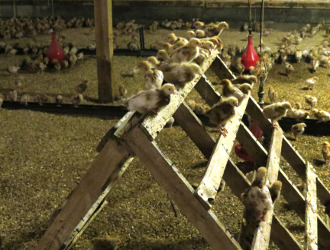
|
|
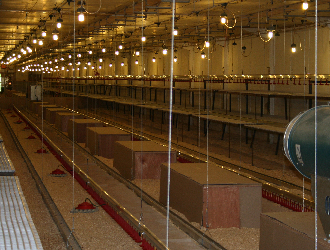 |
|
Perches allow the birds to spread more throughout the house and promote behavioural synchrony. Studies have shown that providing access to perches before four weeks of age reduces the likelihood of injurious pecking.
|
Providing slatted areas in addition to the litter during the rearing stage is becoming increasingly popular.
|
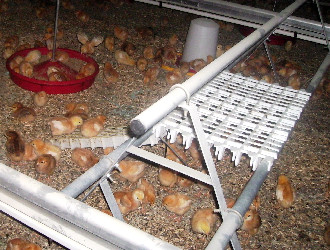
|
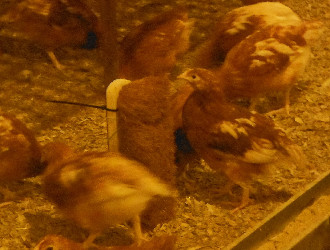 |
|
Providing slats at an early age enables the chicks to get used to slats before being placed into the laying shed. This will help make the transition between the two sheds smoother and should make managing floor eggs easier as the hens are more used to using slatted areas.
|
Providing objects for the chicks to peck at promotes positive foraging behaviour and helps to keep them occupied. This is especially important when the birds are learning what to peck at.
|
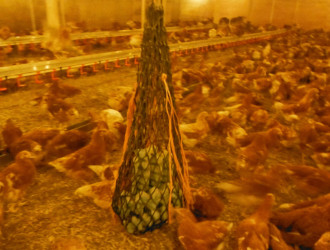
|
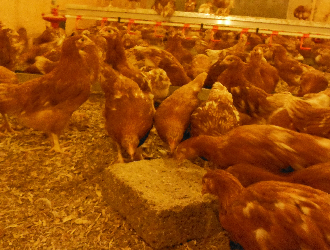 |
|
This photo shows crumpled egg trays in hay nets being used.
|
Use pecking blocks in the rearing shed as well as the laying shed. Hanging them up seems to work best.
|